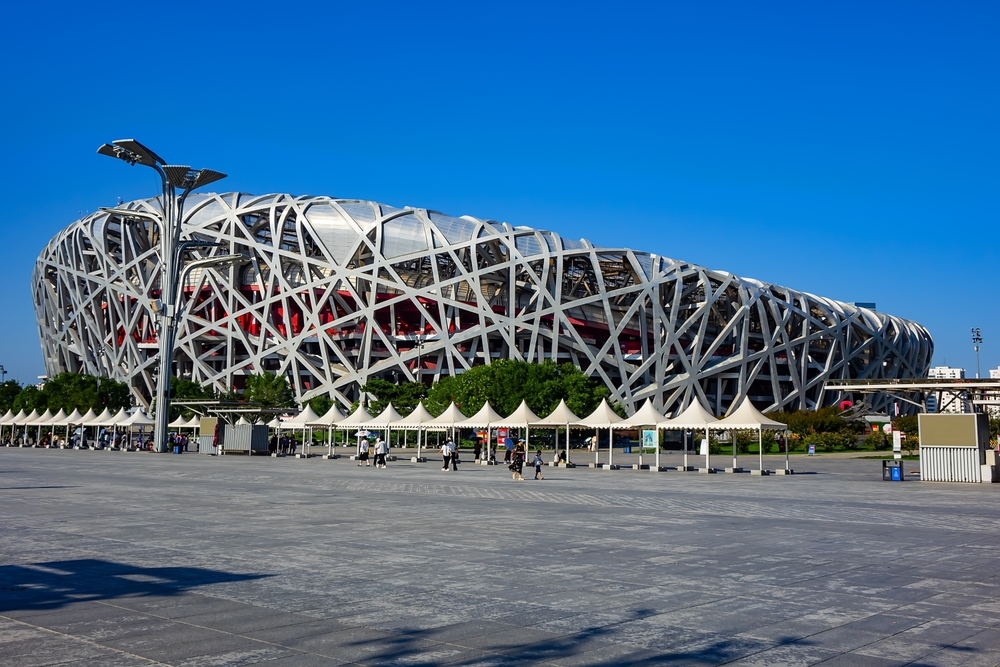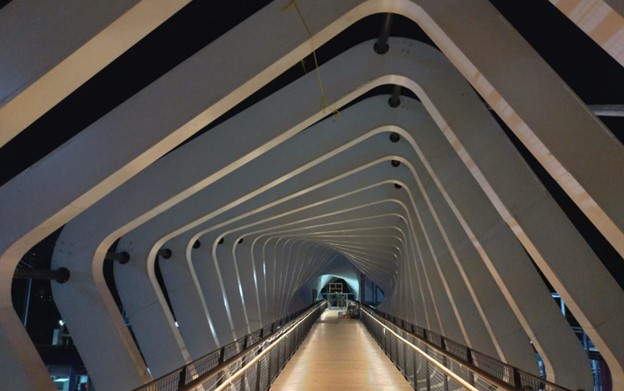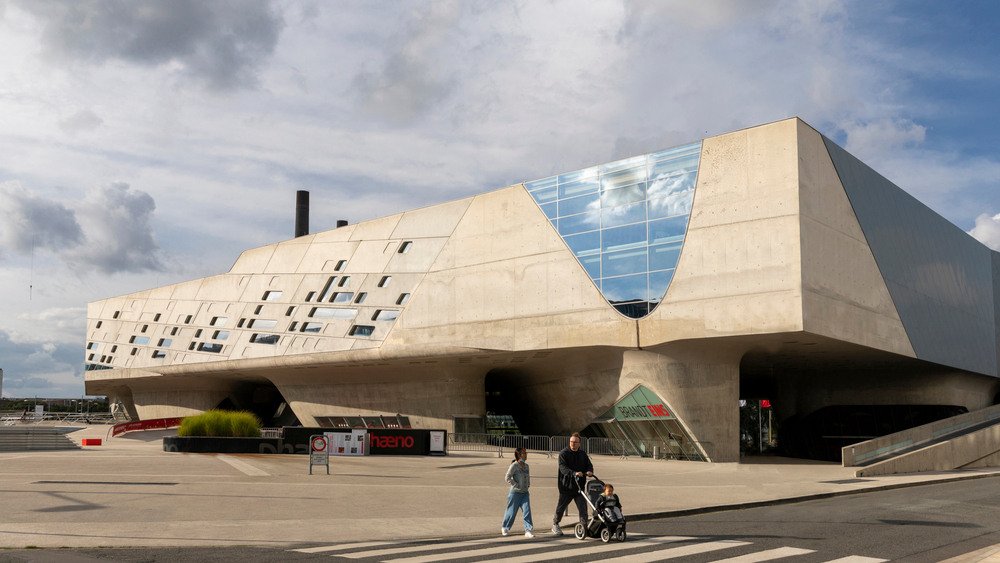12 Sep 2024
What Are the Characteristics of Deconstructivist Architecture? Find Out Here
What Are the Characteristics of Deconstructivist Architecture? Find Out Here
Share:
Deconstructivist architecture, with its revolutionary and unconventional design style, requires materials that can support bold designs while offering strength and durability. This is where COLORBOND® coated steel comes in as an excellent solution. With over five decades of experience, COLORBOND® helps create captivating and durable architectural works, ideal for exploring complexity and irregularity in deconstructivist architecture.
When we talk about deconstructivist architecture, we are discussing a new way of viewing buildings. This style, which differs from traditional approaches that emphasize harmony and symmetry, celebrates irregularity and the complexity of forms.
 JPO Sudirman in Jakarta used COLORBOND®.
JPO Sudirman in Jakarta used COLORBOND®.
Deconstructivist architecture, with its revolutionary and unconventional design style, has captivated the attention of many observers and architecture practitioners around the world. Unlike traditional approaches that emphasize harmony and symmetry, deconstructivist architecture highlights irregularity and the complexity of forms. But how does this style change the way we view buildings?
Definition of Deconstructivist Architecture
Deconstructivist architecture is a design style known for its irregular and experimental characteristics. The term "deconstructivism" itself began to be recognized in the 1980s as part of the post-modern development. During this time, deconstructivist architecture emerged as a reaction against the principles of modern architecture, which emphasized simplicity and order.
Architects who adopt the deconstructivist style often create effects that are confusing and uncomfortable, both inside and outside the building. This approach aims to challenge common perceptions of space and form, offering an alternative view of how architecture can be represented, often appearing undefined and deviating from conventional structures.
Brief History of Deconstructivist Architecture
Deconstructivist architecture is closely related to the post-modern philosophy developed by French philosopher Jacques Derrida in the late 20th century. In the early 1980s, these ideas began to be translated into architecture through a design competition for Parc de la Villette in Paris.
In this competition, the concept of deconstruction was applied in designs by leading architects such as Jacques Derrida, Peter Eisenman, and Bernard Tschumi. This competition marked the beginning of introducing deconstructivist architecture to the public.

In 1988, when the Museum of Modern Art in New York held the exhibition titled "Deconstructivist Architecture," the peak of deconstructivist architecture's introduction occurred. Subsequently, deconstructivist architecture gained further recognition with the opening of the Wexner Center for the Arts in Columbus, which was one of the first major projects to adopt this deconstructivist style.
Over time, the application of deconstructivist architecture has continued to evolve. It is no longer limited to public buildings; this style has begun to be applied to residential designs as an alternative to the often monotonous modern architecture.
Characteristics of Deconstructivist Architecture
The uniqueness of deconstructivist architecture is marked by several distinctive features. Here are some characteristics that differentiate it from other architectural styles:
1. Abstract Forms
Buildings with deconstructivist style often reject traditional design principles that emphasize harmony and symmetry. Instead, deconstructivist designs tend to display imbalance and irregularity. This abstraction becomes one of the defining features, creating visually striking and distinct impressions compared to conventional architecture.
2. Irregular Cladding

One way to identify deconstructivist architecture is through the use of irregular cladding on the building's exterior walls. Cladding materials, such as GRC (Glassfibre Reinforced Concrete), are often chosen for their ability to be shaped according to design needs. In deconstructivist architecture, cladding often appears distorted and does not follow conventional patterns.
3. Integration of Contrasting Elements
Deconstructivist architecture often combines elements that appear contradictory or unconventional. For example, you might see curved roofs, oddly shaped windows, or distorted facades. This style deliberately avoids the use of logical or conventional elements to create the impression that these components are randomly integrated for a specific aesthetic purpose. Fundamentally, this also serves as a form of protest against traditional architectural rules.
 JPO Sudirman in Jakarta used COLORBOND®.
JPO Sudirman in Jakarta used COLORBOND®.
4. Emphasis on Three-Dimensional Geometry
One of the prominent features of deconstructivist architecture is the use of dominant three-dimensional geometry. This design often features slanted and uneven forms. Unlike two-dimensional designs commonly seen in conventional architecture, deconstructivist architecture highlights dynamic and complex three-dimensional shapes.
5. Color as an Accent
In deconstructivist architecture, color often functions more as an accent rather than a primary element. The use of color here tends to focus on highlighting the building's forms and structure, while texture does not play a central role. This principle reflects the idea that in architecture, there are no absolute standards or superior styles, and each element has the opportunity to develop individually.

Examples of Deconstructivist Architecture
Deconstructivist architecture, with its unique and bold characteristics, can be found in several iconic buildings around the world. Here are a few examples:
1. Denver Art Museum by Daniel Libeskind
Completed in 2006, the expansion of the Denver Art Museum designed by Daniel Libeskind is a notable example of deconstructivist architecture. Inspired by the Rocky Mountains and the dynamic city of Denver, Libeskind's design features sharp angles and unusual forms.
2. Phaeno Science Centre by Zaha Hadid

One of the monumental works by renowned architect Zaha Hadid is the Phaeno Science Centre, completed in 2005. This building, made of concrete and glass, is known for its design resembling the shape of a whale.
3. Beijing Olympic Stadium “The Bird’s Nest” by Herzog & de Meuron dan Ai Weiwei
The Beijing National Stadium, built to host the 2008 Summer Olympics, was designed by Herzog & de Meuron in collaboration with Ai Weiwei. This stadium is an intriguing example of deconstructivist architecture, combining organic forms with complex steel structures. Its design, resembling a bird’s nest, not only challenges traditional views of sports stadiums but also creates a natural impression, as if the structure is emerging from its surrounding environment.

